In the following article, the word “women”, “woman” and associated pronouns will be used. Please note that this article is for all people who were born biologically female, regardless of gender identification, and that breast cancer can affect all people (less than 1% of all breast cancers occur in men).
With the growing demands of modern life, many women are often left juggling so much: their families, careers, and/or social commitments, which can leave little time for themselves. It’s easy for women to put themselves last on the priority list, especially when it comes to their health.
Changing the mindset

Certain conditions, when diagnosed at an earlier stage, can be treated more easily with known treatment options and lead to better treatment outcomes—this can be particularly true for some types of cancers, such as breast and colon cancers.
Commonly diagnosed cancers in women

Breast cancer is the most common form of cancer among Canadian women—excluding non-melanoma skin cancers—and is the second leading cause of cancer-related deaths for this group. Risk factors such as family history or having dense breasts can increase the likelihood of developing breast cancer, among others.*
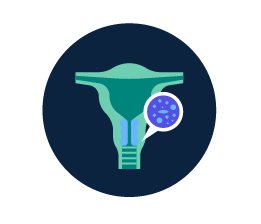
Another cancer diagnosed among Canadian women is cervical cancer, with most cases occurring in women younger than 50 years of age. There are a number of risk factors associated with cervical cancer, including infection with HPV, being sexually active, smoking, giving birth many times and a history of sexually transmitted infections (STIs).*

Endometrial cancer, which starts in the cells that line the uterus (called the endometrium), is the most common type of uterine cancer and usually occurs in women over the age of 50. Risk factors include, but aren’t limited to, certain conditions such as polycystic ovarian syndrome or Lynch syndrome, number of menstrual periods, never giving birth, overweight or obesity, diabetes, low physical activity level.*

Ovarian cancer is a broad term for cancers that begin at, or near, the ovaries. While it can occur at any age, ovarian cancer is more likely to develop in women who have gone through menopause. There are a number of risk factors associated with ovarian cancer, including certain genetic conditions, personal or family history of ovarian cancer, breast cancer, or other cancers, a history of endometriosis, belonging to certain ethnic groups (for example, French Canadian or Ashkenazi Jewish), and number of lifetime ovulations.*
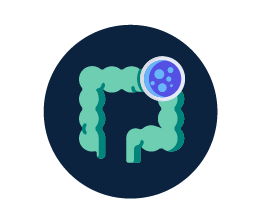
Another common cancer in women is colorectal cancer, which is cancer that develops in either the colon or rectum. Colorectal cancer typically occurs in people over 50 years of age, with North America having one of the highest incidence rates. However, colorectal cancer is rising at an alarming rate in Canadians under the age of 50. Other risk factors include personal or family history of colorectal cancer, as well as many lifestyle-related factors, such as being overweight or obese, drinking alcohol, smoking, and diets high in fat, red and processed meat.*
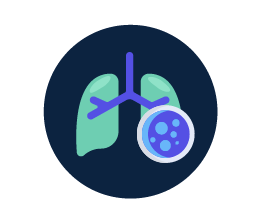
Lung cancer is the most common type of cancer diagnosed in Canadians (excluding non-melanoma skin cancers)—and is the leading cause of death from cancer amongst women. As you may already know, smoking tobacco is the most important risk factor for developing lung cancer and is responsible for about 72% of cases in Canada. Other risk factors include exposure to second-hand smoke, radon, asbestos, air pollution, occupational exposure and family or personal history of lung cancer.*
* This list is not exhaustive and does not include all possible risk factors.
Common signs and symptoms*
Breast cancer
- Firm or hard lump in the breast
- Lump in the armpit
- Changes in the shape or size of the breast
- Changes to the nipple
- Discharge that comes out of the nipple without squeezing it or that has blood
Cervical cancer
- Abnormal vaginal bleeding between periods, after menopause or after sexual intercourse
- Foul-smelling or increased amount of vaginal discharge
- Unusually long or heavy periods
- Pain during sexual intercourse
Endometrial cancer
- Abnormal vaginal bleeding, including a change in menstruation (e.g., heavier periods), bleeding between periods, bleeding after menopause, or spotting
- Unusual vaginal discharge
- Pelvic pain or pressure
- Pain during intercourse, urination, or bowel movements
Ovarian cancer
- Bloating
- Difficulty eating
- Abdominal discomfort
- Urinary changes
Colorectal cancer
- Bloody Stools
- Prolonged Constipation/Diarrhea
- Narrow Stools
- Abdominal Cramping
- Unexplained Weight Loss/Loss of Appetite
- Nausea/Vomiting
- Fatigue/Lethargy
Lung cancer
- Cough that won’t go away or gets worse
- Shortness of breath
- Chest pain
- Blood in mucus coughed up from lungs
- Wheezing
- Hoarseness or other changes to your voice
- Unexplained weight loss
* This list is not exhaustive and does not include all possible signs and symptoms.
Patient support groups play an important role in providing information about risk factors and symptoms as well as support for patients and caregivers. There are a wide range of these organizations in Canada, including Lung Cancer Canada, the Canadian Lung Association, Lung Health Foundation, Colorectal Cancer Canada, the Colorectal Cancer Resource & Action Network, the Canadian Breast Cancer Network, Rethink Breast Cancer, Ovarian Cancer Canada and many more.
While each type of cancer has its unique set of signs and symptoms, they may not always appear in the earlier stages of the disease. This is one reason why playing an active role in your health journey and knowing how to self-advocate can contribute to improving your overall health and well-being.
What you can do
Keeping up with regular health check-ups, informing yourself on different diseases, including related signs and symptoms, and paying close attention to any changes in your body are some of the ways you can help protect your health.
Additionally, participating in screening programs such as Papanicolaou (PAP) tests, Fecal Immunochemical (FIT) tests, and mammograms are other ways that can help you and your physician detect potential health problems and start treating them early.
That said, these are just a few steps women can take to play an active role in their health. Self-advocacy is another way, which can be done by keeping an open line of communication with your healthcare team.
This can sometimes be challenging, but there are several strategies that can help:

Take notes: Prepare a list of questions or concerns to discuss with your doctor. Some things to include: your symptoms, when they began and how often they occur; any factors that might impact your symptoms such as your medical history, diet, medications you are currently taking, or conditions that run in the family.
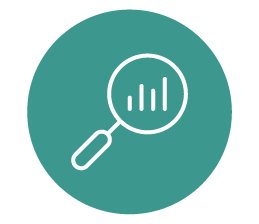
Get informed: You can conduct your own research when it comes to a particular diagnosis and come prepared with questions to ask your healthcare team— patient support groups are a great place to start.
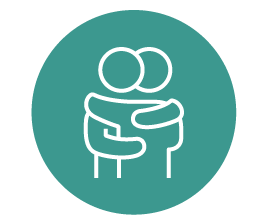
Bring someone with you: If privacy isn’t a concern, ask a friend or relative to come with you to your medical appointments. They can provide support, ask questions you may forget, and help you remember what was discussed after the appointment.
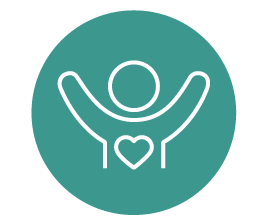
Listen to your gut: You know your body better than anyone. If you feel something is different, even if someone assures you it’s normal, don’t be afraid to speak up or ask for a second opinion.
References:
1. Canadian Cancer Society. Breast cancer statistics. Available at: https://cancer.ca/en/cancer-information/cancer-types/breast/statistics Last accessed March 16, 2023. 2. Healthy Women. New Survey: Moms Are Putting Their Health Last. Available at: https://www.healthywomen.org/content/article/new-survey-moms-are-putting-their-health-last Last accessed March 16, 2023. 3. Canadian Cancer Society. Risks for breast cancer. Available at: https://cancer.ca/en/cancer-information/cancer-types/breast/risks Last accessed March 16, 2023. 4. Canadian Cancer Society. Tiple-negative and basal-like breast cancers. Available at: https://cancer.ca/en/cancer-information/cancer-types/breast/what-is-breast-cancer/cancerous-tumours/triple-negative-breast-cancer Last accessed March 16, 2023. 5. Canadian Cancer Society. Symptoms of cervical cancer. Available at: https://cancer.ca/en/cancer-information/cancer-types/cervical/signs-and-symptoms Last accessed March 16, 2023. 6. Canadian Cancer Society. Risk factors for cervical cancer. Available at: https://cancer.ca/en/cancer-information/cancer-types/cervical/risks. Last accessed April 11, 2023. 7. Canadian Cancer Society. Symptoms of breast cancer. Available at: https://cancer.ca/en/cancer-information/cancer-types/breast/signs-and-symptoms. Last accessed April 11, 2023. 8. Canadian Cancer Society. Symptoms of cervical cancer. Available at: https://cancer.ca/en/cancer-information/cancer-types/cervical/signs-and-symptoms. Last accessed April 11, 2023. 9. Canadian Cancer Society. Screening for cervical cancer. Available at: https://cancer.ca/en/cancer-information/cancer-types/cervical/screening. Last accessed April 11, 2023. 10. Canadian Cancer Society. Screening for breast cancer. Available at: https://cancer.ca/en/cancer-information/cancer-types/breast/screening. Last accessed April 11, 2023. 11. Better Health. Regular health checks. Available at: https://www.betterhealth.vic.gov.au/health/servicesandsupport/regular-health-checks?viewAsPdf=true. Last accessed April 11, 2023. 12. BC Women’s Hospital + Health Centre. Advocacy for Yourself & Others. Available at: http://www.bcwomens.ca/health-info/staying-healthy/navigating-the-health-system/advocacy-for-yourself-others#Advocate–for–yourself–&–others. Last accessed April 11, 2023. 13. American Cancer Society. Cancer facts for women. Available at: https://www.cancer.org/healthy/cancer-facts/cancer-facts-for-women.html. Accessed April 20, 2023. 14. Canadian Cancer Society. What is uterine cancer? Available at: https://cancer.ca/en/cancer-information/cancer-types/uterine/what-is-uterine-cancer. Accessed April 20, 2023. 15. Canadian Cancer Society. Risk factors for uterine cancer. Available at: https://cancer.ca/en/cancer-information/cancer-types/uterine/risks. Accessed April 20, 2023. 16. Canadian Cancer Society. Symptoms of uterine cancer. Available at: https://cancer.ca/en/cancer-information/cancer-types/uterine/signs-and-symptoms. Accessed April 20, 2023. 17. Canadian Cancer Society. Risk factors for ovarian cancer. Available at: https://cancer.ca/en/cancer-information/cancer-types/ovarian/risks. Accessed April 20, 2023. 18. Canadian Cancer Society. Symptoms of ovarian cancer. Available at: https://cancer.ca/en/cancer-information/cancer-types/ovarian/signs-and-symptoms. Accessed April 20, 2023. 19. Canadian Cancer Society. What is ovarian cancer? Available at: https://cancer.ca/en/cancer-information/cancer-types/ovarian/what-is-ovarian-cancer. Accessed April 20, 2023. 20. Canadian Cancer Society. Symptoms of colorectal cancer. Available at: https://cancer.ca/en/cancer-information/cancer-types/colorectal/signs-and-symptoms. Accessed April 20, 2023. 21. Canadian Cancer Society. Risk factors for colorectal cancer. Available at: https://cancer.ca/en/cancer-information/cancer-types/colorectal/risks. Accessed April 20, 2023. 22. Canadian Cancer Society. What is colorectal cancer? Available at: https://cancer.ca/en/cancer-information/cancer-types/colorectal/what-is-colorectal-cancer. Accessed April 20, 2023. 23. Canadian Cancer Society. Lung and bronchus cancer statistics. Available at: https://cancer.ca/en/cancer-information/cancer-types/lung/statistics. Accessed April 20, 2023. 24. Canadian Cancer Society. Risk factors for lung cancer. Available at: https://cancer.ca/en/cancer-information/cancer-types/lung/risks. Accessed April 20, 2023. 25. Canadian Cancer Society. Symptoms of lung cancer. Available at: https://cancer.ca/en/cancer-information/cancer-types/lung/signs-and-symptoms. Accessed April 20, 2023.
CA-NON-02542
